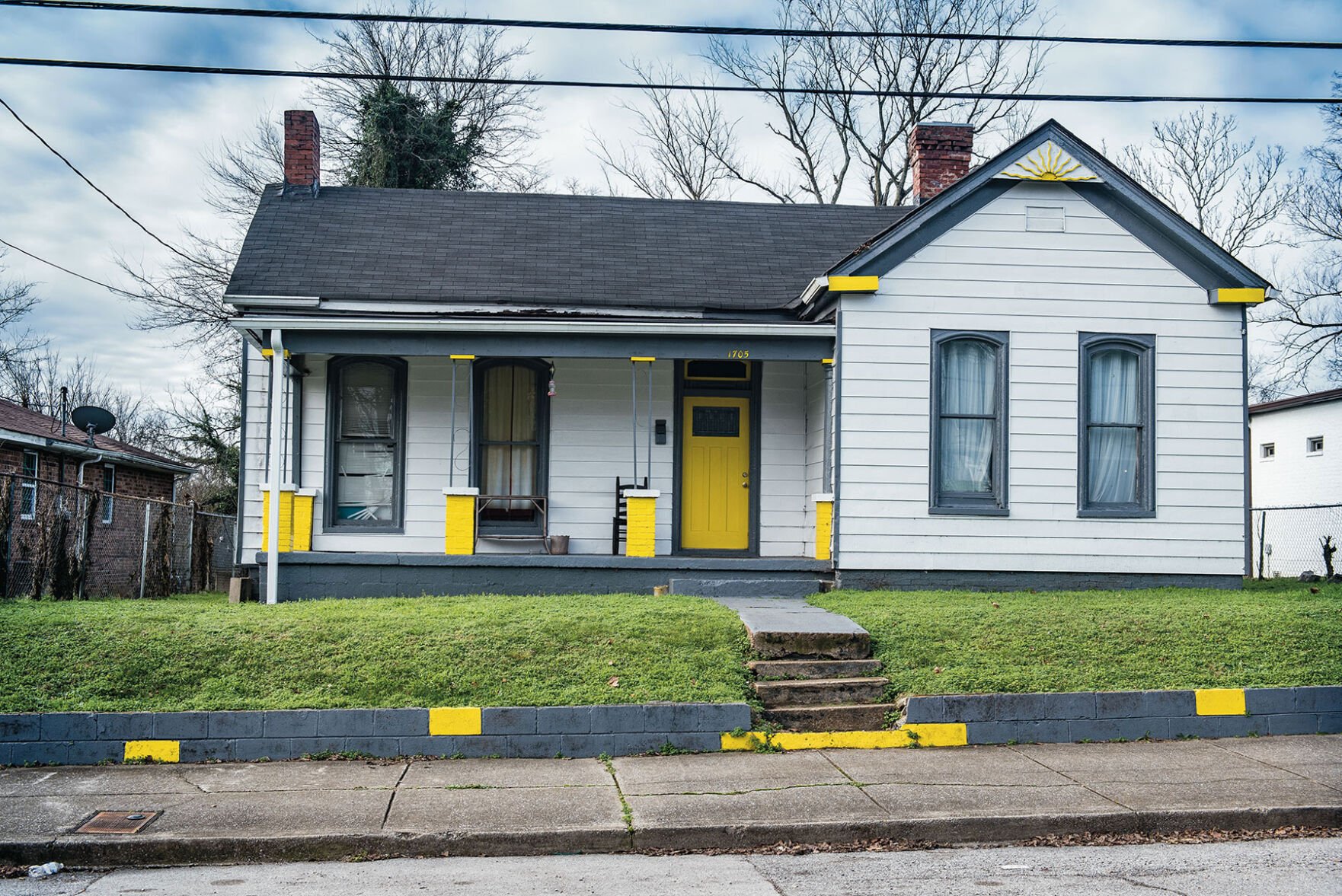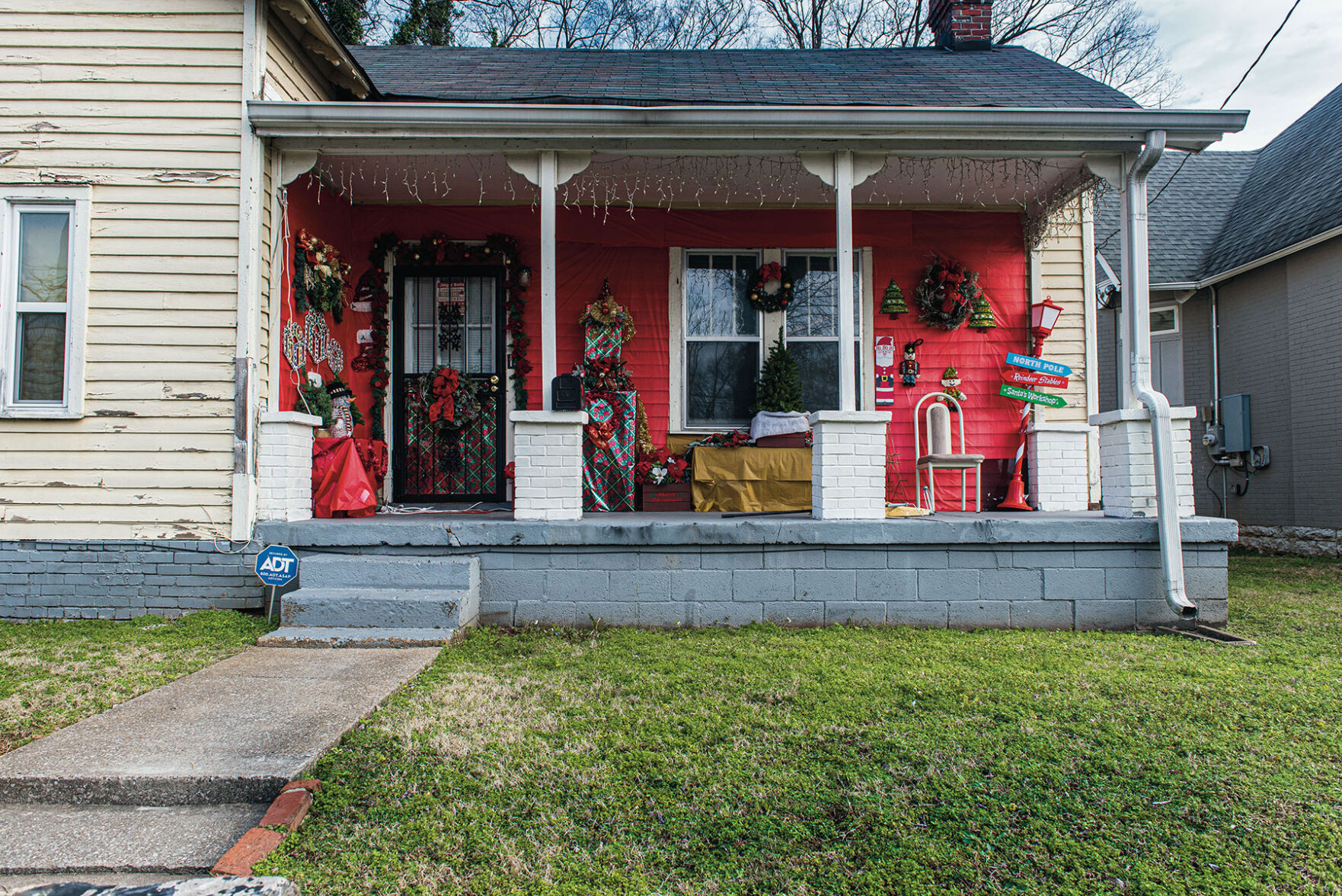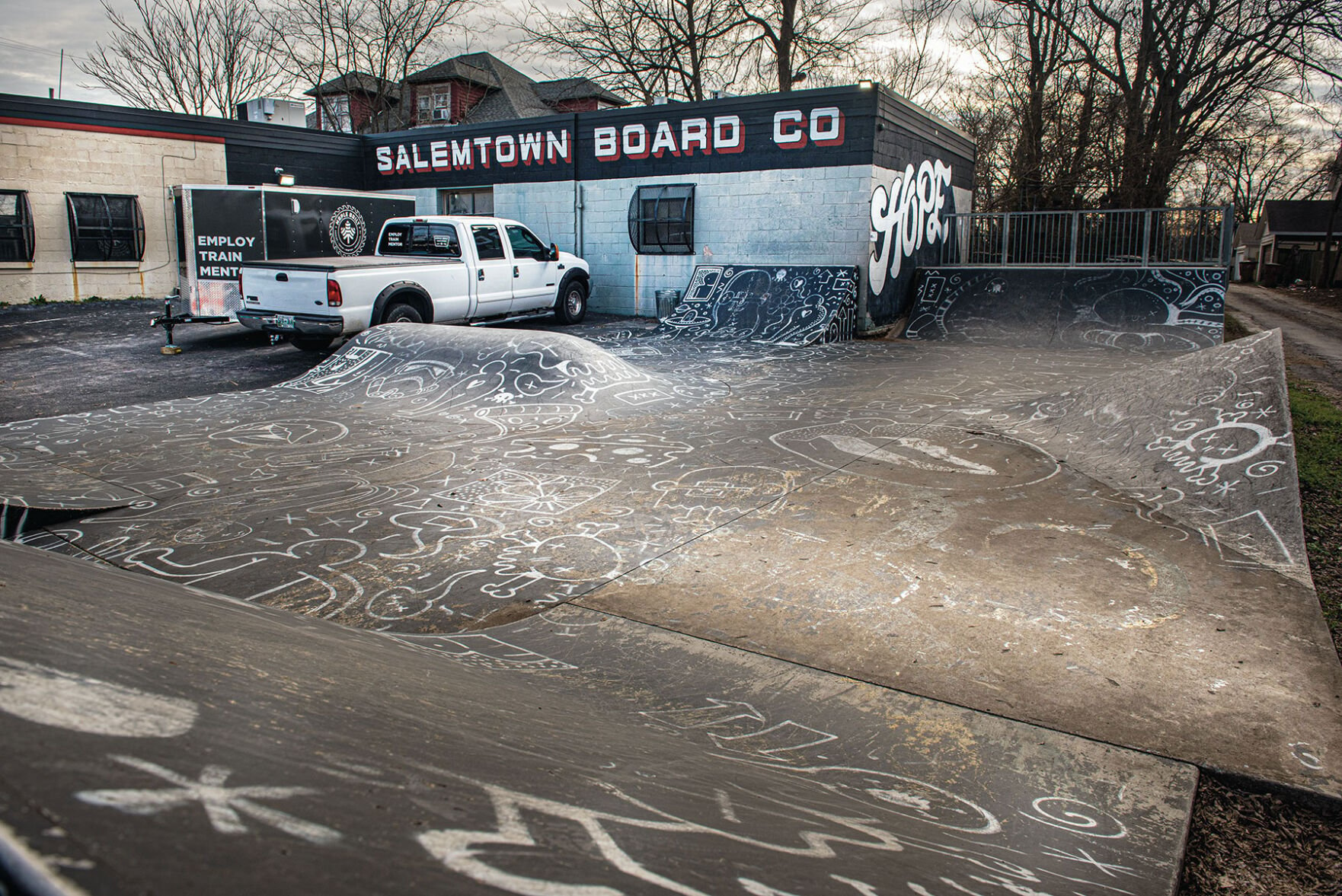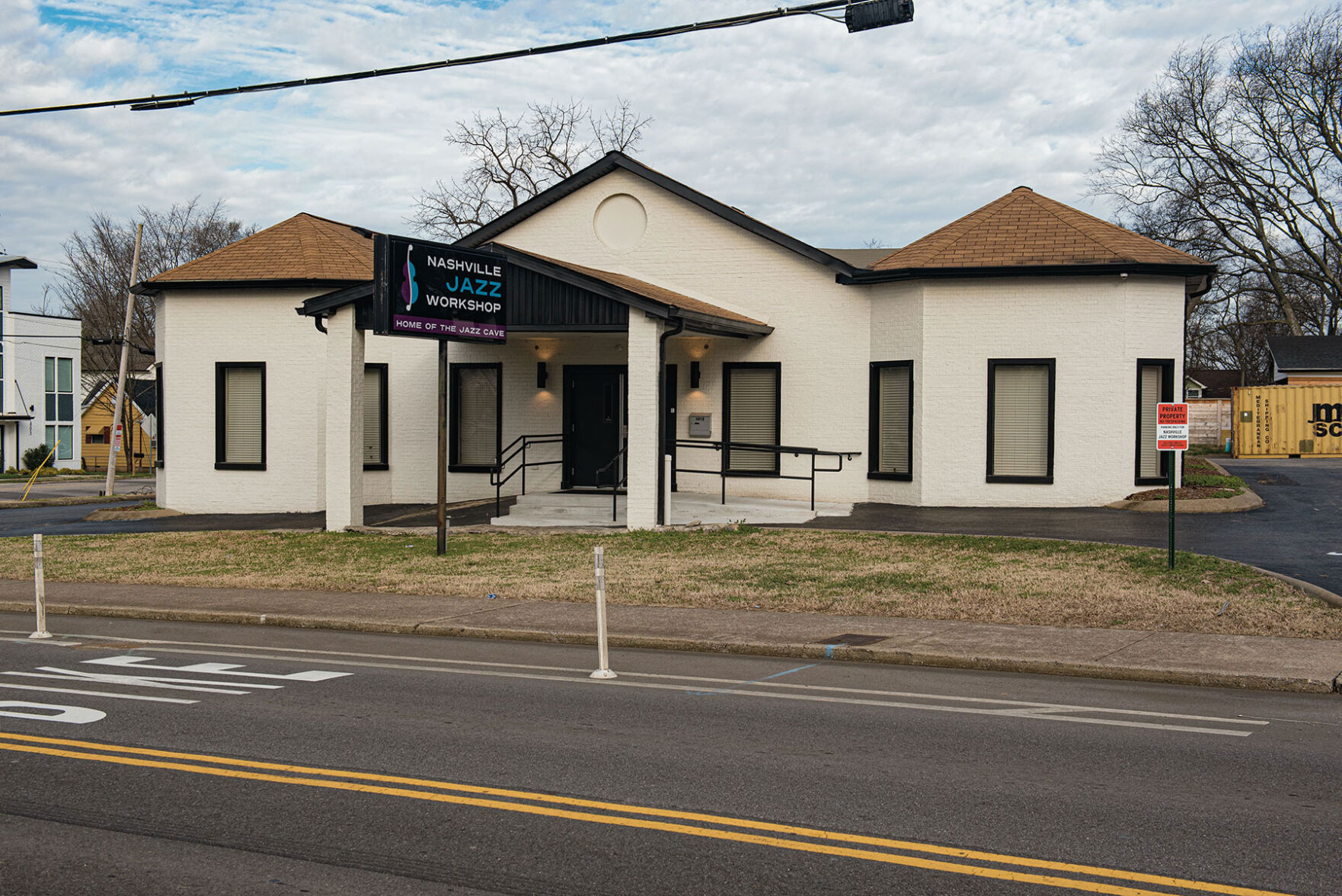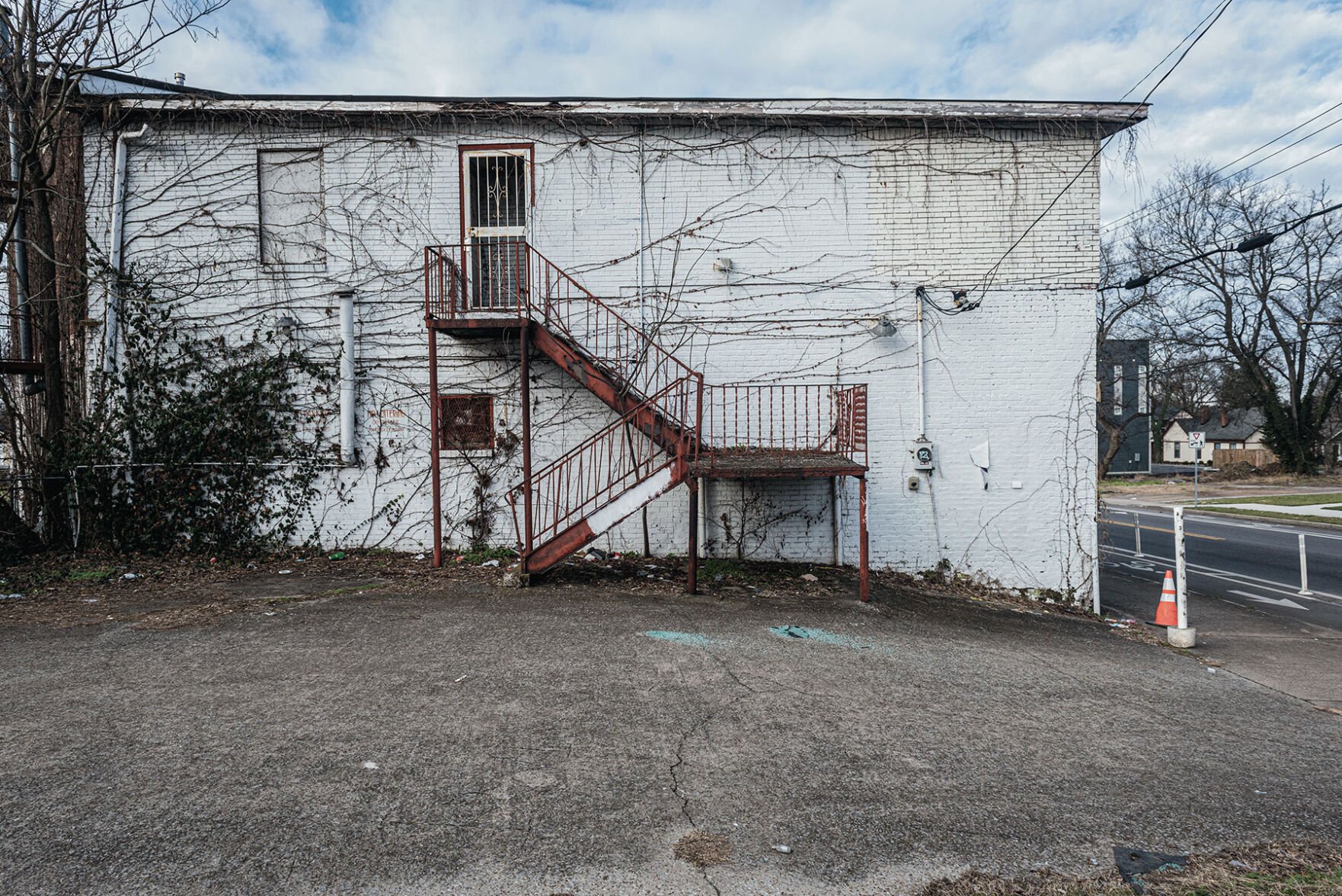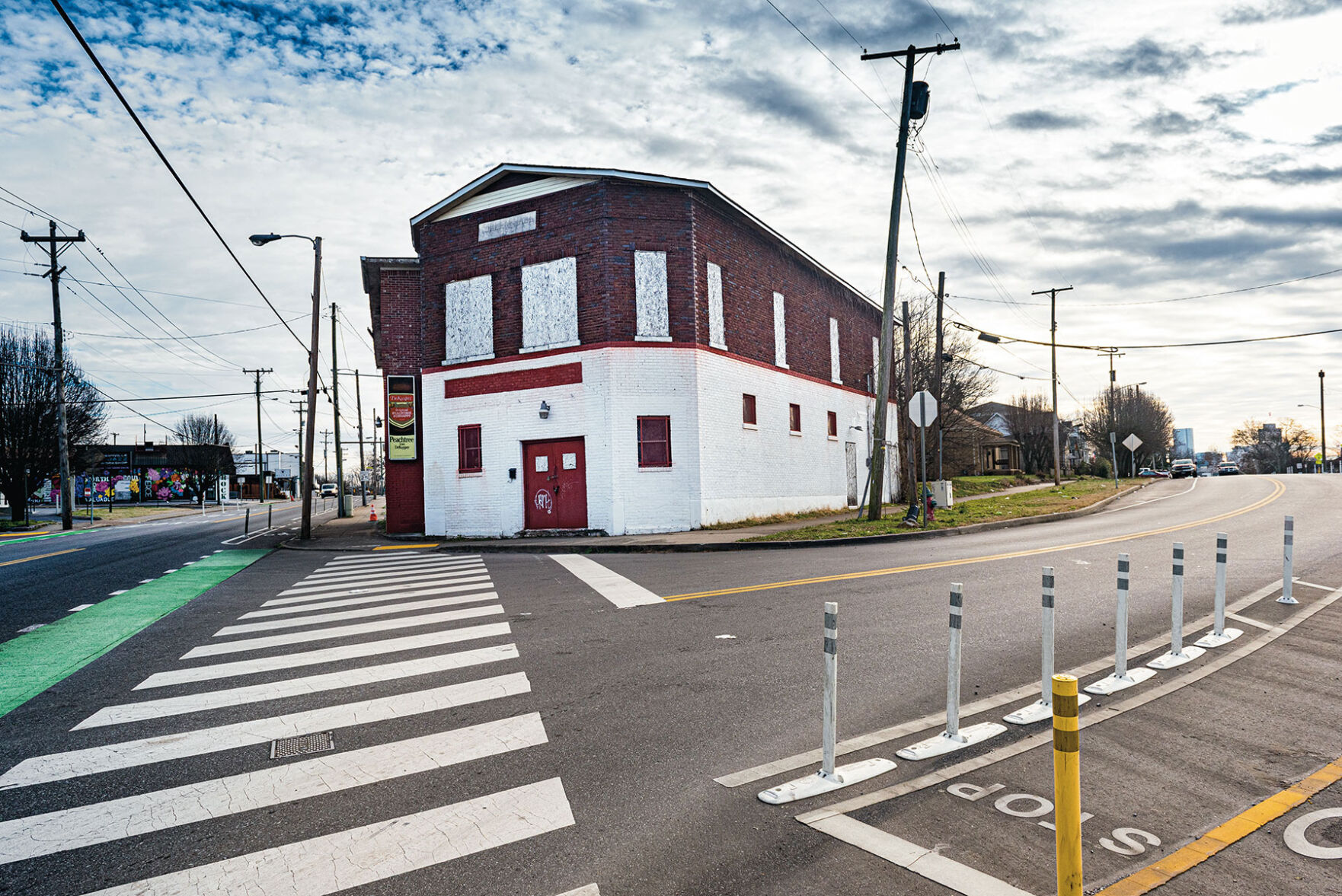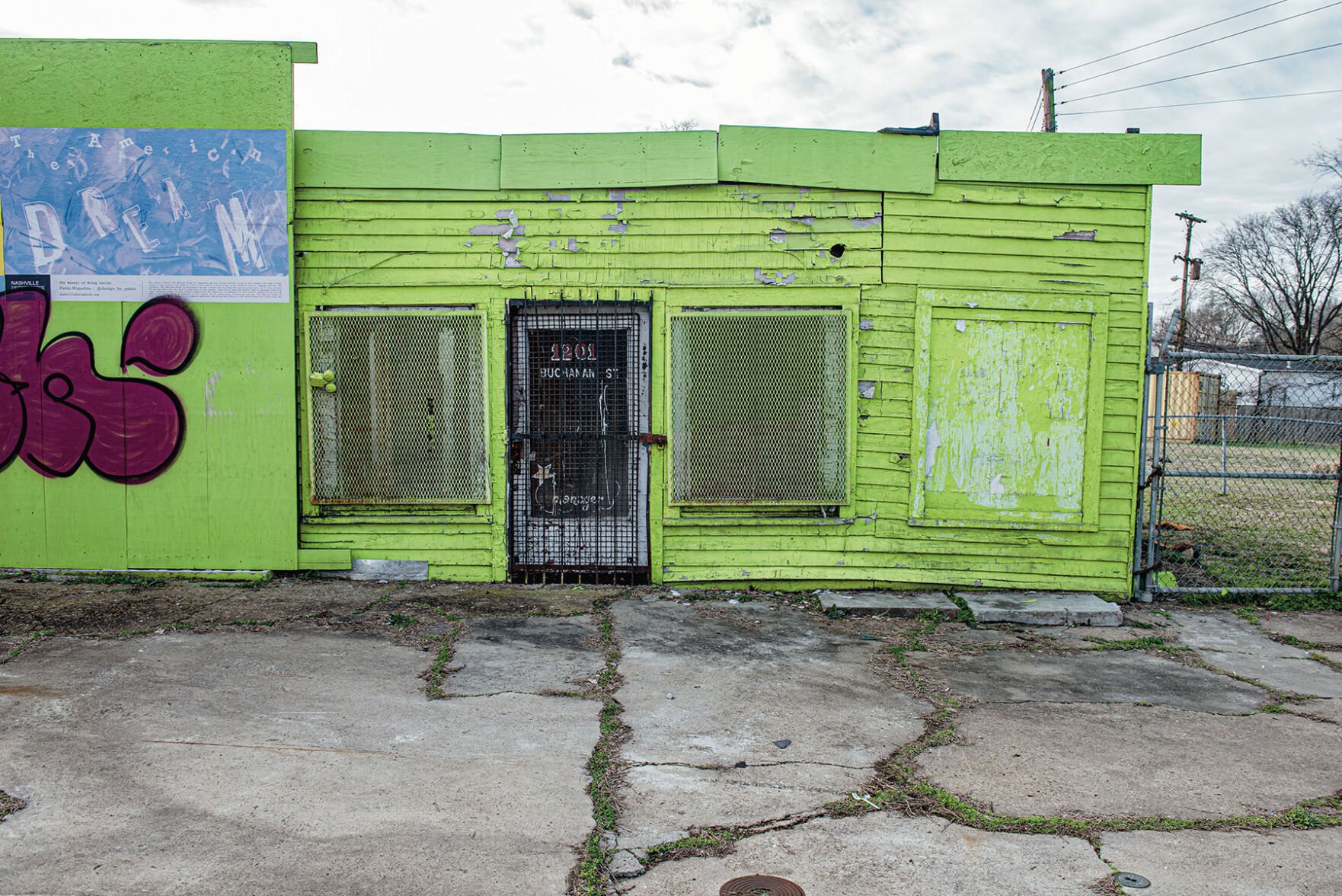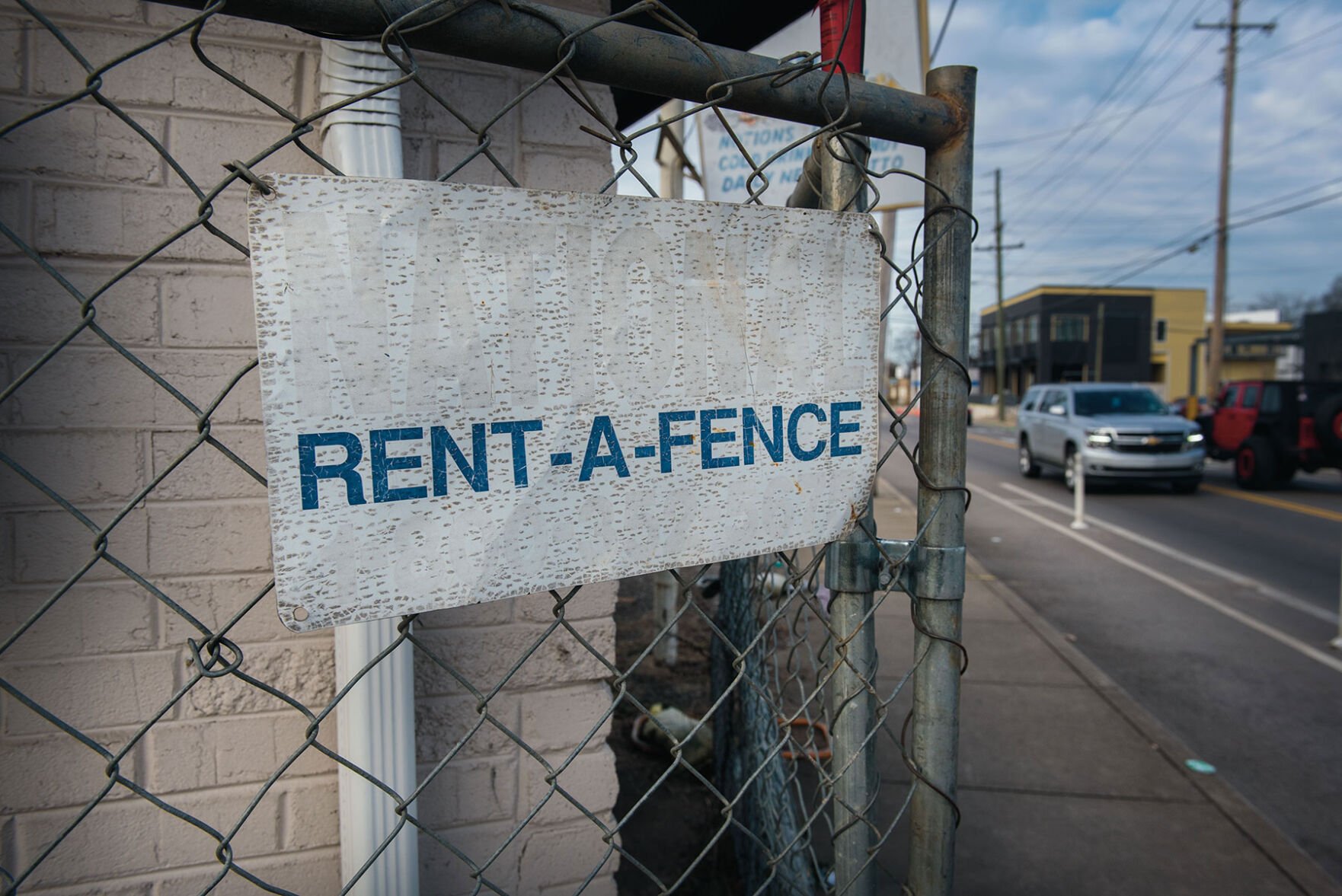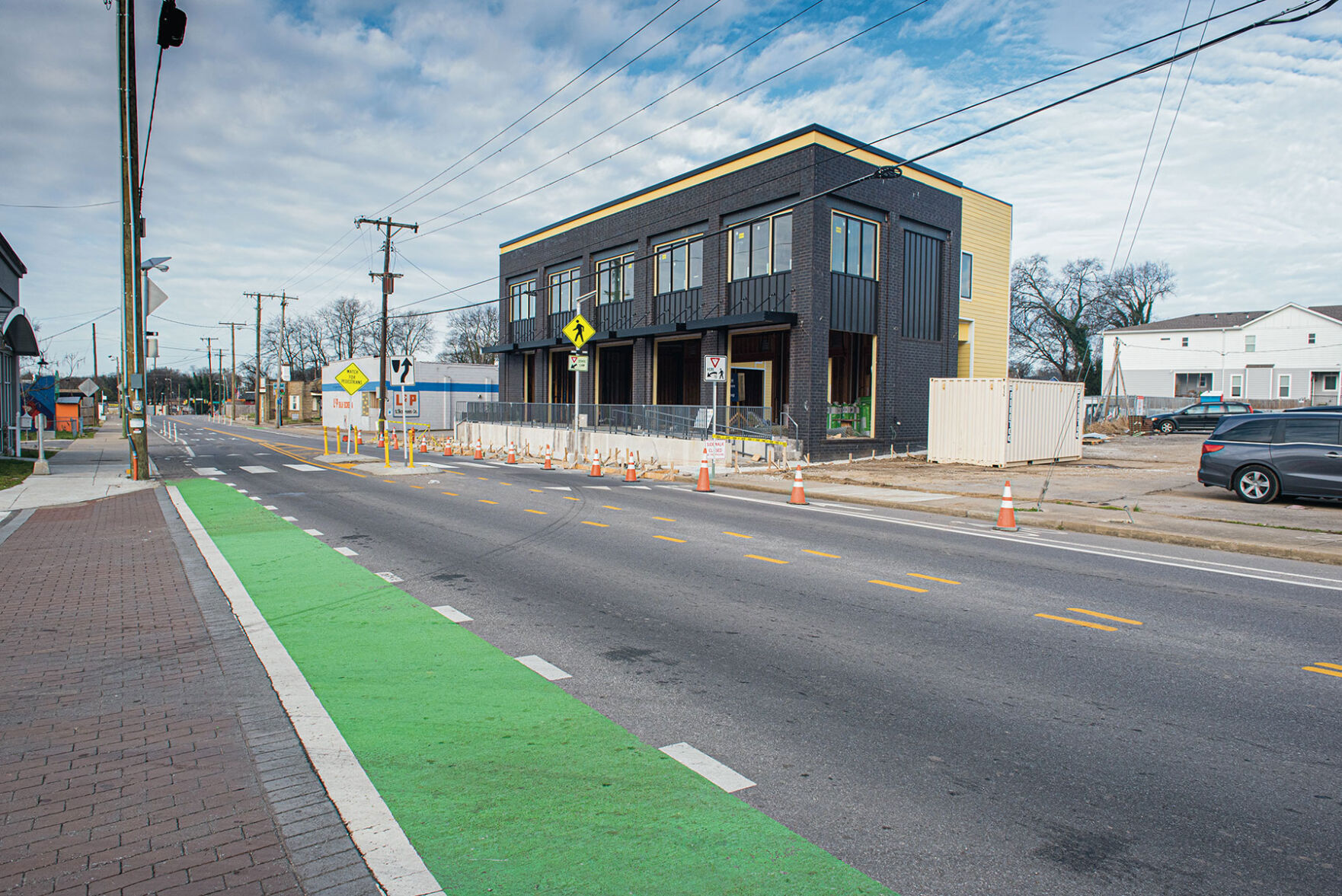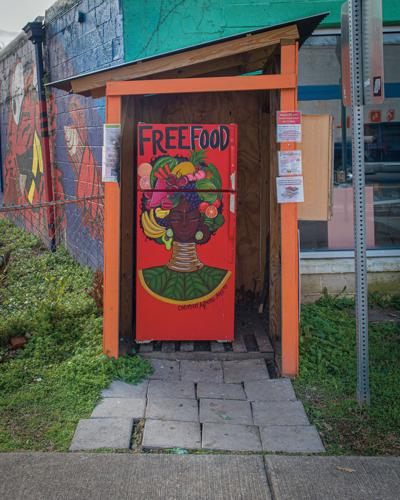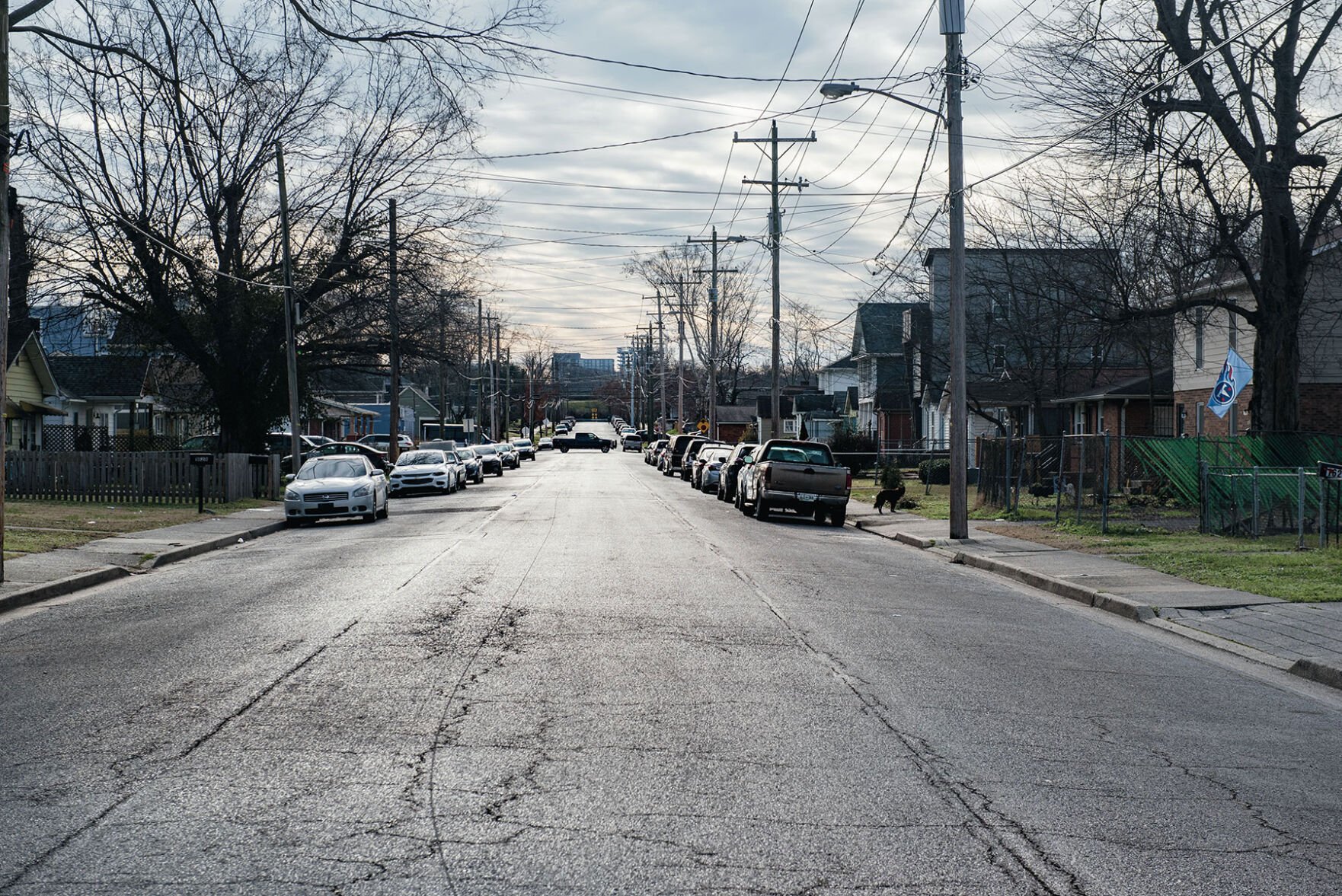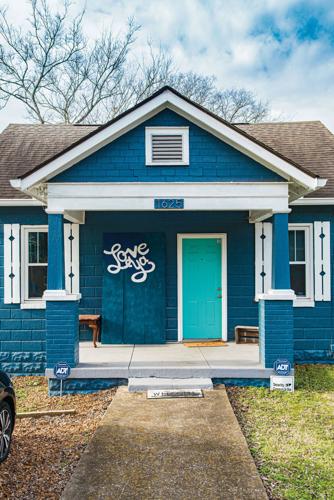Once a month, reporter and resident historian J.R. Lind will pick an area in the city to examine while accompanied by a photographer. With his column Walk a Mile, he’ll walk a one-mile stretch of that area, exploring the neighborhood’s history and character, its developments, its current homes and businesses, and what makes it a unique part of Nashville. If you have a suggestion for a future Walk a Mile, email editor@nashvillescene.com.
The Route: From Elizabeth Park, northeast on Jane Street, then left on 10th Avenue North. Left on Buchanan, left on 16th Avenue North, left on Wheless Street. Then right on 11th back to the start.
Cranes: 0
Abandoned Scooters: 0
Decrepit Pay Phones: 2
For the most part, the street grid north of downtown is fairly consistent. Nineteenth-century presidents (Monroe, Jefferson, Garfield) make perpendicular intersections with numbered avenues.
But west of Rosa Parks, things get skewed. Some of Nashville’s most confoundingly bizarre intersections are in the neighborhood around Buchanan Street. There are scalene triangles. There are seemingly normal four-way stops with an extra road shoehorned in. More than 70 percent of the all-way stop signs in the city are in Elizabeth Park. OK, that’s (probably) not true, but there are a lot. There are so many triangular lots, a developer with an eye on rebranding could call it the Flatirons District. Not to give them any ideas.
Interstate 65 abuts the neighborhood, and it would be easy to assume that the labyrinthine arrangement is the result of the crass cynicism of the kind of Jim Crow-era infrastructure planning that sliced the neighborhood around Jefferson Street in two a little farther to the south.
There are former through streets that dead-end hard at fences marking the interstate right-of-way, but this mishmash of streets dates all the way back to its beginning.
In the first half of the 19th century, what is now Elizabeth Park — the North Nashville neighborhood centered around the eponymous park and bound by Buchanan, interstates 65 and 40 and 11th Avenue North — was the Walnut Race Course, the less famous, less prestigious sibling to the Nashville Race Course at what is now Metrocenter. The race course’s biggest claim to fame is that it was the site of the first state fair in 1855. But its stint as fairground didn’t last long, because it was subdivided in 1856, with the lot lines and street grid of today more or less following the same pattern they did then. The biggest change is that poor Millard Fillmore lost his street. It’s now 11th Avenue.
The park itself is, in fact, on the original plan, a nice little triangle at one end of the neighborhood. Of course, there was no basketball court then, as James Naismith wouldn’t hang his peach baskets in a Massachusetts YMCA for another 35 years. Many of the cross streets in the original plan had women’s names, but like poor President Fillmore, most were lost to the city’s numbering system. But not Jane Street, which climbs gently from the park to the northeast.
What Jane doesn’t have is any houses. It’s an 830-foot relic without a single address. Sure, there are houses on Arthur and 10th Avenue that border Jane, but their mailboxes face the longer roads. By and large, the housing stock east of the park is vintage. Some have been renovated — or at the least repainted as gentrification jumped Rosa Parks Boulevard — but not all of them. It’s a different story west of the park, where tall-and-skinnies have climbed out of the ground once the old homes met their fate at the business end of a bulldozer.
Along 10th, most of the houses are of the original stock, some more than a century old. Owners have added their flairs of character. One home is mostly slate-gray but features splashes of bright-yellow accents. Another’s porch overflows with Halloween decorations, and it neighbors a house with an impressive Christmas display. It’s quaint, and it’s clear the owners are, for the most part, interested in preserving what came before.
And then there’s Buchanan itself, where the area’s sudden come-up is as bracing as the January north wind.
“This Neighborhood Has Been Gentrified” reads a sticker on a utility pole at 10th and Buchanan. The sticker tells no lies.
The Trenches Gallery is next to a purveyor of fine leather goods. Beloved Black-owned bespoke pizza joint Slim & Husky’s is catty-corner to The Rollout, the S&H empire’s cinnamon roll shop. A former dry cleaner — the old verbiage on the fading sign is visible, just — was for a time high-end barbershop Supreme Choppers. Now it’s waiting for a new tenant, but it certainly won’t be a laundry. Behind that is Salemtown Board Company, which borrows the name of another North Nashville neighborhood, much as The Best Western Plus Belle Meade Inn & Suites is at White Bridge Road and I-40.
There’s NKA Gallery and Creole-and-daiquiri joint Willie B’s. And then there’s the former home of Leon’s Liquors in the two-story, 5,500-square-foot home-plate-shaped building on Buchanan between 11th and Arthur. Built in 1920, it’s sat vacant since the liquor store — and the adjacent night club, known as the Right Spot when it operated in the late ’80s and early ’90s — closed. But the building has solid bones, as those in the trade would say, and it’ll definitely turn into … something.
There appears to be one of those now-ubiquitous “WE BUY HOUSES” banners fading on the side of the Mountain Dew-green former gas station — pipes that once filled pumps peek still from the pavement. But squint and you’ll see that it’s no advertisement, but satire. It isn’t a banner but rather a mural, and the full text includes a phone number: 1-800-GENTRIFICATION.
This is, of course, the Buchanan Arts District — the signs on the light poles tell you so — thus the bright murals and the galleries, including boundary-stretching space Elephant Gallery at Buchanan and 15th, though 15th is mostly just an alley south of Buchanan.
There are many new homes on 16th Avenue and more coming out of the ground. There’s also a smattering of mid-20th-century single-story courtyard-style apartment strips. And there’s a shocking number of Philadelphia Eagles fans — OK, two based on the number of flags hanging from homes, but that’s a shocking number.
And there are freshly graded vacant lots, just waiting for the construction crews. There are signs in yards from high-dollar Nashville real estate agencies.
On Wheless Street’s climb up to the park, it’s clear: Neither the sticker nor the faded satirical mural were lying.

